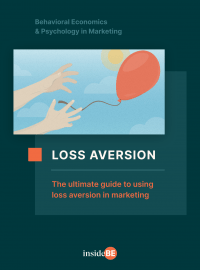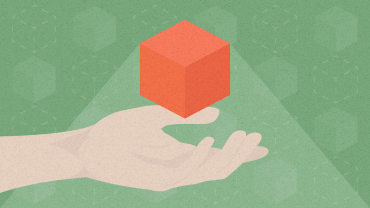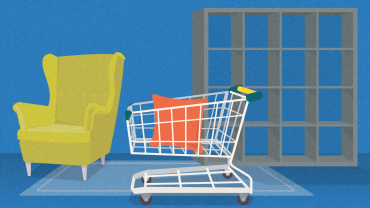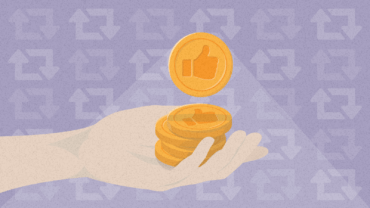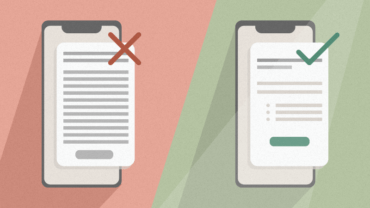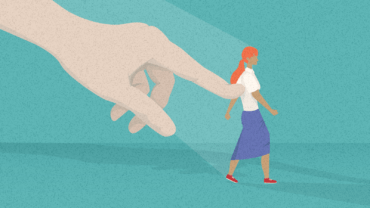Think About What Your Customers Might Lose Before Thinking About What They Might Gain
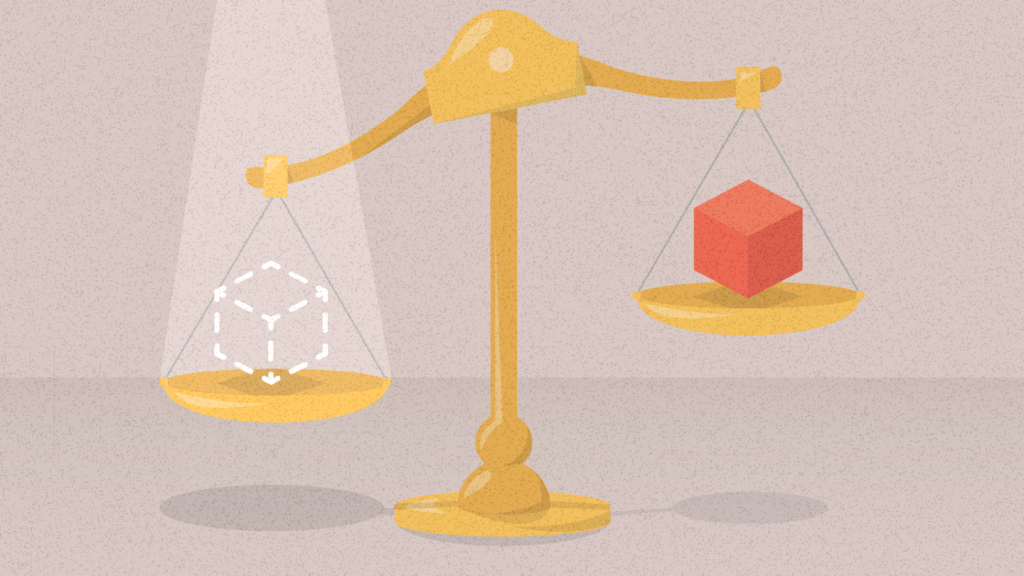
Successful marketing isn’t just about telling people what they might gain. It’s also about understanding what people might fear losing by making the choices you need them to make. This is important because losses have a bigger behavioral effect than gains.
In this article, you’ll discover:
- That successful marketing isn’t just about telling people what they might gain, it’s also about understanding what they may fear losing in choosing your product or service;
- That this is important because the prospect of a loss has a bigger behavioral effect than the prospect of a gain; and
- A list of potential losses that may affect choice that have come out of dozens of workshops and research projects.
In our piece: “How to understand what might be stopping people from making the choices you need them to make”, we touched on how critical it is to understand all of the barriers or headwinds that might make it difficult for customers or potential customers to make the choices or embrace the behaviors you want.

Discover ground-breaking ideas and fascinating solutions.
And just like how focusing on “why people won’t” rather than “why people will” is counterintuitive to us as marketers and humans, so is thinking about the potential losses that could sneak up and undermine your efforts to convince customers of all of the benefits and gains your product provides.
Loss Aversion
We are roughly 2.5 times more sensitive to losses than we are to gains of similar size. A message framed as a potential loss might therefore be more persuasive.
This phenomenon, known as loss aversion, is one of the basic principles of Behavioral Economics.
Loss aversion is also one of the first and most widely known biases that the “founding fathers” of Behavioral Economics, Daniel Kahneman and Amos Tversky, studied (it’s worth noting that Kahneman and Tversky’s work on Prospect Theory, the overall theory that Loss Aversion falls under, resulted in Kahneman winning the Nobel Prize for Economic Sciences in 2002).

Discover ground-breaking ideas and fascinating solutions.
Losses Loom More Heavily Than Gains
Here’s how loss aversion works. Rationally, the negative behavioral impact of losing $100 should be of the same magnitude as the positive behavioral impact of gaining $100. After all, $100 is $100. But in many experiments, losing an amount is shown to have twice the psychological impact of gaining the same amount.
Losing an amount is shown to have twice the psychological impact of gaining the same amount.
Sparky Anderson, the famous baseball coach, was scientifically correct when he said, “Losing feels twice as bad as winning feels good.” And because it feels twice as bad, we tend to intuitively do all we can to avoid behaviors and decisions that may result in a loss.
The Endowment effect
When people own something they value it beyond its objective value. Frame your message in ways that make customers feel like they already own your product, discount or benefit.
A Motivator…
Marketers use loss aversion and the related scarcity and endowment effects frequently, particularly as conversion tactics. These include limited-time offers, booking systems that tell you “only two seats remaining at this price,” and offers that flip the switch in order to avoid potential loss by saying “you’re losing $20 a month by not switching to our service plan.” All these are powerful approaches that are proven to work.
And a Demotivator
But if we’re trying to change behavior, whether it be for customers, potential customers, or employees, loss aversion may be a key tool not just for getting people to do something, but also for understanding why they might not. The prospect of a loss that’s not always so obvious and won’t necessarily emerge in traditional consumer research can be a particularly stubborn barrier or headwind.
Loss aversion may be a key tool not just for getting people to do something, but also for understanding why they might not.
Sometimes losses that sway choices aren’t so strongly connected to a decision and are very often affected by a broader context. For example, research ahead of the 2016 US election showed that students who attended college outside of their home state were less inclined to register to vote than students who did study in their home state. Qualitative research indicated this was due to out-of-state students feeling like they would “lose their identity” by doing so.
With every decision, there’s the potential for loss in some form or another
While it sounds counterintuitive, improving (or attempting to improve) a product can increase the potential for loss. Anyone who’s ever taken a marketing course should be familiar with Coca-Cola’s disastrous launch of a new formula for its classic drink in April 1985 in response to Pepsi Cola’s growth and aggressive marketing.
The backlash from brand loyalists, particularly in Coke’s heartland — the Southern states of the US — was so extreme that the original formula was swiftly reinstated less than three months after the launch of the “new and improved” formula.
Improving (or attempting to improve) a product can increase the potential for loss.
William Ferris, a professor at the University of Mississippi and an expert on the history and culture of the southern states, said at the time that “changing Coca-Cola is an intrusion on tradition.” This view has been embraced by others who suggest that Southerners felt a loss of regional identity prompted by the change. Coke, an emblem of the South, was changing in response to Pepsi, a brand that represented the “Yankee” North.
A fascinating neuroeconomics study in 2004 used fMRI brain scans to examine the differences in brain activity when people drank an identical cola. One group drank Coca-Cola, another drank Pepsi Cola, and a control group drank a brandless cola.
In the Coke-branded group, scans revealed significantly more activity in the hippocampus than in the Pepsi group, suggesting that the brand association for Coke was triggering memories and connections. A small adjustment in flavor triggered a sense of loss of culture, identity, and personal memories.
What can you do to avoid a mistake like this?
One way would be to follow the example of Kraft Macaroni and Cheese. Launched in 1937, Kraft Macaroni and Cheese has been a childhood food icon for many Americans. In the 2010s, Kraft began a program to take artificial additives out of its products, including their staple Kraft Macaroni and Cheese. In taste tests, the product looked and tasted the same as the original.
They had previously overcome barriers of visual appeal and taste, but one very significant barrier remained – people’s reaction to change. While Kraft may have wanted to focus their advertising for Macaroni and Cheese on the new recipe without artificial additives (which seems like a very positive claim on the surface of things), they knew from qualitative research that any change to this traditional and beloved comfort food had to be handled with care.
In their submission for the 4As (American Association of Advertising Agencies) Jay Chiat Strategic Excellence Awards, Kraft’s advertising agency Crispin Porter + Bogusky (CP+B) described loss aversion as a key factor:
Loss aversion meant that people who should have been excited to learn that Kraft had eliminated artificial ingredients were focused more on what they might be giving up. They said they were in favor of improving the recipe, but their visceral reactions told a different story: Don’t mess with my Kraft Mac & Cheese.
Kraft and CP+B came up with a clever solution. They introduced the new product in December 2015 but didn’t advertise the ingredient change right away. They made only one, almost unnoticeable, change to the packaging. The ingredients panel on the side of the box was updated with the new ingredient list.
Kraft simply let the public keep buying the Mac & Cheese they loved without overtly signaling the changes to the ingredients. Rather than telling them the taste hadn’t changed, they left people to come to their own conclusions. And over the three-month period of what Kraft called the World’s Largest Blind Taste Test, 50 million boxes of the new recipe were sold, and less than 40 people contacted Kraft through social and consumer hotlines reporting a change in taste.
Three months later, Kraft revealed the recipe change on TV, in newspapers, and on social media with headlines like “We’d invite you to try it, but you already have.” Rather than maintaining the status quo and keeping the same old recipe people were afraid of losing, Kraft simply waited until the new recipe became the new vogue, removing fear of change and loss out of the equation entirely.
What might your customers fear losing?
The Business of Choice, a BE consultancy firm, uses qualitative research techniques to understand what losses might affect a particular decision or change in behavior. Additionally, an exercise they use in workshops is to ask participants to consider every possible thing that someone might lose by adopting whatever behavior the organization wants people to embrace. The cumulative list now runs to well over a hundred words or phrases – here’s a sample below.
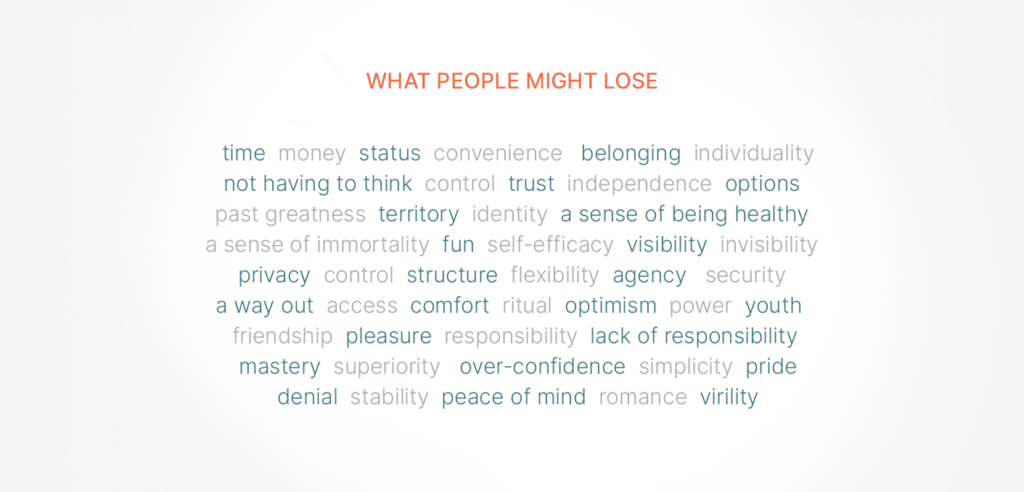
Source: The Business of Choice
In healthcare, physicians are often reluctant to prescribe the most powerful drug as an initial course of treatment, instead preferring to keep it on standby in case the first line of treatment is unsuccessful. If they prescribe the more powerful option first, then they feel they’re losing out on their Plan B. And with some health conditions, patients resist stronger treatments as they confirm the serious nature of their illness, diminishing their ability to see themselves as healthy.
The IKEA effect
When people put effort into something, it becomes more valuable to them than its objective value. Make your customers contribute or at least give them the feeling they contributed.
In a project with school cafeterias, The Business of Choice found that students were more likely to accept a mandatory vegetarian main course over a meat-based main course when they were offered a choice of three different vegetarian dishes rather than just one. Having options allowed them to accept the vegetarian meal without losing their sense of agency.
An organization that introduced a new workflow system found that a significant number of its veteran employees continued using their own systems that they “cobbled together.” Adopting a new system meant they’d be losing their feeling of mastery and giving up on the processes they created (see the IKEA effect). Inviting those people into the process of developing the new system could have mitigated both of these losses, and led to a smoother adoption.
Think of these examples and the list above as a place to start. The potential loss that could be impeding the choices you want customers, prospects, or employees to embrace may or may not be on this list. But if all you’ve done is think about what people might lose, then you’re already in a better position to develop effective marketing and communication programs. And that’s something you’ll gain from.
Key Takeaways
- With every decision comes a potential loss, whether that be a decision to start doing something, quit doing something, or even continue doing something.
- Losses have a bigger effect on behavior than gains — so it’s very important to understand and take into account what people might be afraid of losing when making the choices you need them to make.
- Losses can be practical, or they can be emotional. Be particularly careful that the choice you’re encouraging people to make doesn’t lead people to feel like they’re losing an aspect of their identity.
